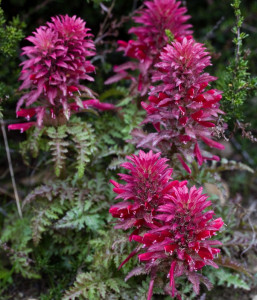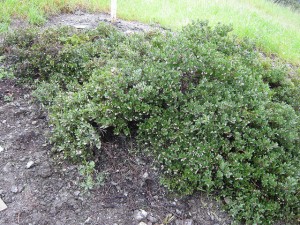I was coming down the mountain in a light rain when I noticed a small bunch of pinkish-white, bell-like flowers at the end of a branch beside the trail. It was mid-February, so these could have been manzanita flowers, except for two things: First, they were much larger than any manzanita flowers I’d ever seen; and second, I was in Malaysian Borneo, several thousand miles away from the land of manzanitas.
I was in the midst of a two-week trip, most of it spent exploring the island’s tropical lowland rain forests. At that moment, however, I was in the temperate zone halfway up Mount Kinabalu, one of the highest mountains in Southeast Asia (13,425 feet). These manzanita look-alikes (which turned out to be in the same family), and the roadside cattle egrets, were about the only familiar-looking flora and fauna I saw during the trip. Indeed, almost everything I encountered there was new and strange: pitcher plants and strangler figs, orangutans and silver leaf monkeys, hornbills and trogons, stick insects and tiger leeches.
All of this was quite wonderful, but in spite of the amazing diversity, I discovered I’m not really a rain forest guy: too hot and humid, too muddy underfoot, and too hard to find the brilliantly colored birds in the dense canopy, especially when my glasses and binoculars kept fogging over. It made me appreciate more than ever the Bay Area’s enchanting blend of temperate habitats–though it would be cool if we had some primates (beside Homo sapiens) on our wild lands.
And then there’s our legacy of publicly accessible parkland that Borneo–for all its “open space”–just doesn’t have. To access that trail on Mount Kinabalu you have to sign up at a locked gate and get a plastic badge to wear on the trail. And unless you’ve made a pricey reservation for the two-day climb to the top, you have to be out by 4 p.m.
Such controls are intended to keep this sole trail up the mountain from becoming overrun, and that’s a good thing. But there’s something sad about rationing access–especially for Malaysians–to such an iconic piece of the country’s natural heritage, while so much of the rest of the island’s landscape gets turned into oil palm plantations. So it reminded me how fortunate we are here in the Bay Area to be working toward a strategy for identifying and saving important natural habitats: The Bay Area Open Space Council’s recently released Conservation Lands Network is a pioneering achievement that provides a sound scientific basis to guide our land acquisition and stewardship efforts over the next decade and beyond.
Speaking of decades, I’d like to end with a huge “Thanks!” to all 400 of you who attended our big 10th anniversary party on January 22. It was a real treat to have such a warm and enthusiastic gathering of our community of friends to launch the second decade of Bay Nature. (For those who couldn’t attend, there’s a little taste at baynature.org/gala.) While it’s fun to travel beyond the Bay Area, there’s no place like home, and it’s a blessing to be back just in time for our springtime wildflower display. Don’t miss it!

.jpg)



-300x199.jpg)